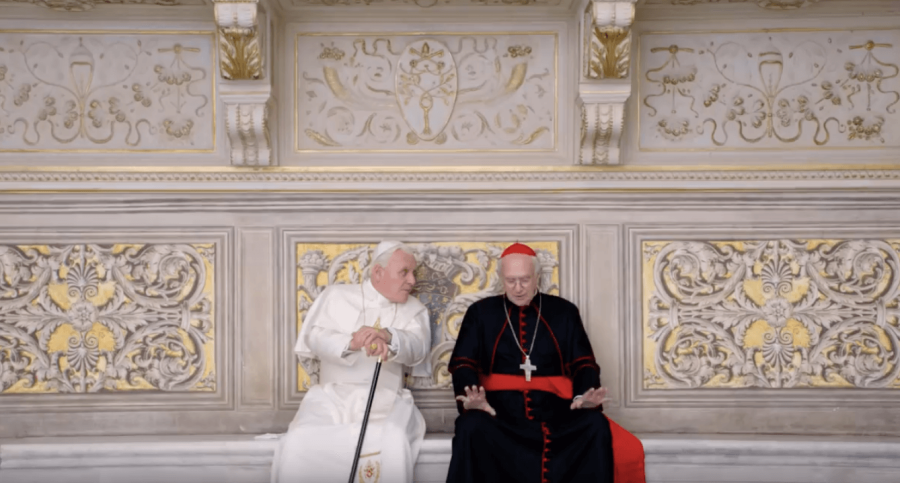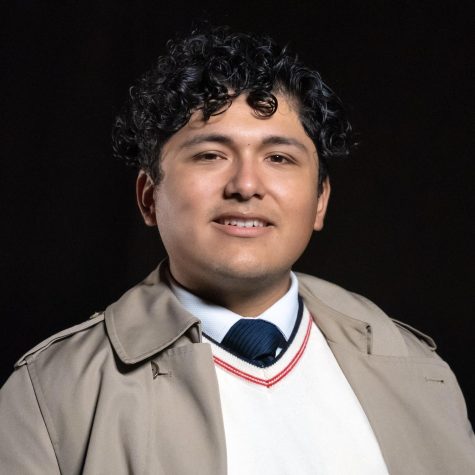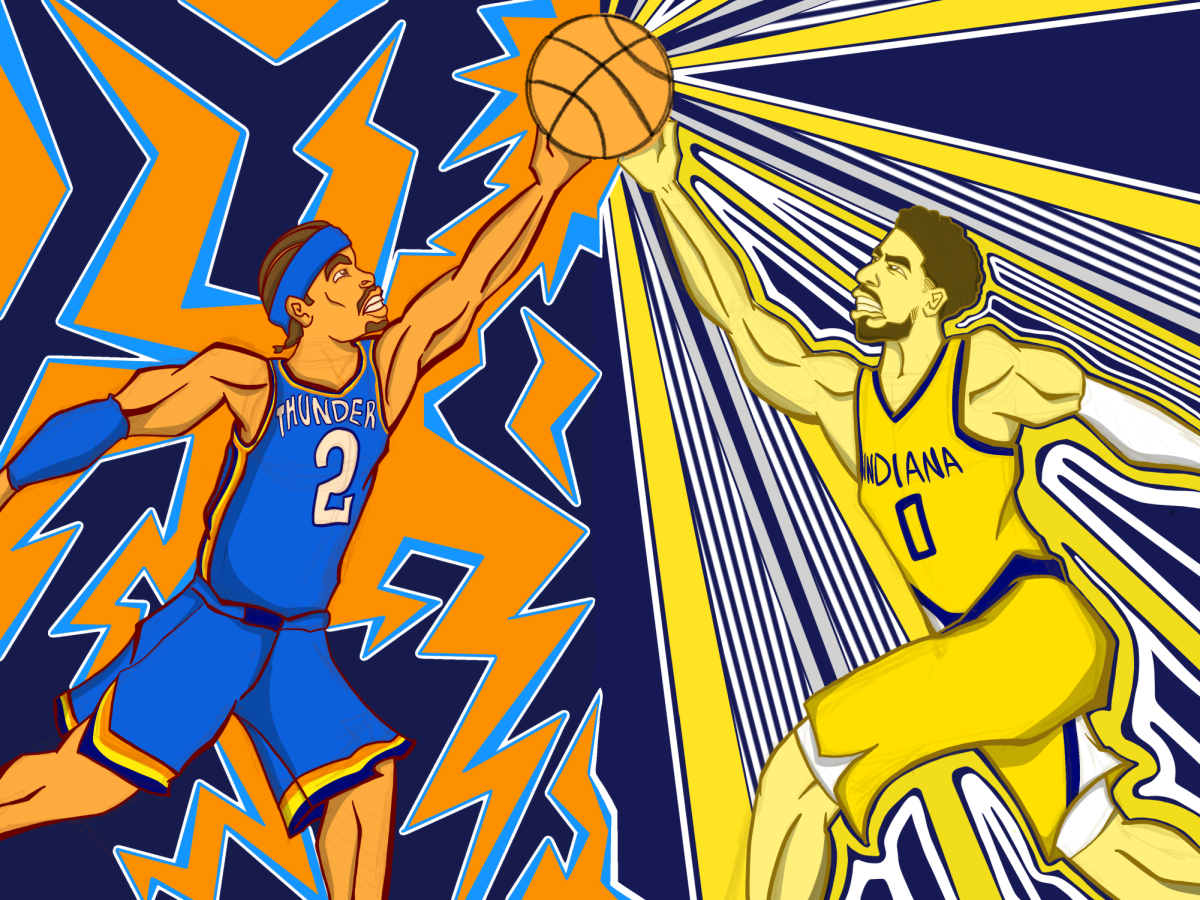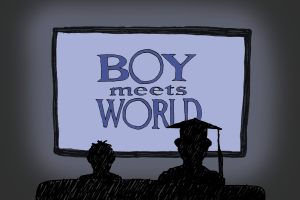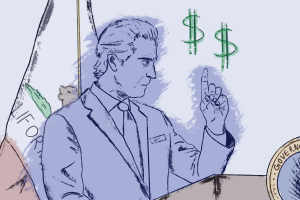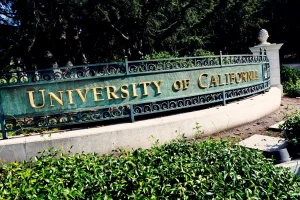Movie Review: “The Two Popes”
“The Two Popes” places the viewer behind the closed doors of the Vatican.
Jan 9, 2020
On April 19, the year of our Lord, 2005, the College of Cardinals elected Cardinal Joseph Ratzinger as the 265th leader of the Catholic Church after Pope John Paul II died. Fast forward to 2012, and this is where the majority of “The Two Popes” takes place. Cardinal Jorge Bergoglio wishes to retire and demands that Pope Benedict allows him to. However, Benedict bars him from doing so in what he later refers to as a “theological conundrum.”
“The Two Popes” is a Netflix exclusive movie directed by Fernando Meirelles, known for works like “Waste Land” and “Cidade de Deus,” and written by Anthony McCarten, known for “The Theory of Everything” and “Bohemian Rhapsody.” The film stars Jonathan Pryce as Cardinal Bergoglio, Juan Minujín as young Jorge Bergoglio, and Anthony Hopkins as Pope Benedict. This movie is a character-driven movie that humanizes two of the most revered religious figures in recent memory.
The entire film centers around the various interactions between Cardinal Bergoglio and Pope Benedict. At the start of the film, the viewer can sense the disdain that Pope Benedict holds against Cardinal Bergoglio. For example, Benedict pauses at the sight of Bergoglio’s picture, and even refuses to shake his hand and acknowledge him amongst the other cardinals. A lot of the tension between Benedict and Bergoglio is accredited to their major ideological differences: Benedict is more conservative and traditional, while Bergoglio stands at the forefront of progression within the church. The tension between the two comes to a head when Benedict summons Bergoglio to his summer residence and the two begin walking and talking in the estate’s garden. Their dialogue is akin to a battle between two swordsmen; rather than using swords, it is a battle of wit and intellect with lots of banter and sarcasm alike. Their debate covers theological topics like the nature of God and sacraments, the stances of the church, and even the pedophile scandal within the church.
The performances of Pryce and Hopkins are amazing in this movie. The viewer can see the fire in their eyes as they defend their respective stances. The beauty between Benedict and Bergoglio lies not only in their opposition but also in their attempts to be more like brothers under Christ. Seeing these two characters converse about trivial things like soccer, coffee, and pizza, and seeing them enjoy themselves as Benedict plays the piano, humanizes these religious figures in a way I have never seen before. While the two might not see eye-to-eye in terms of belief, they can tolerate each other as the film progresses. So much even, that when Bergoglio confesses his past sins of allowing his ego to push away people he was trying to protect during a bloody dictatorship in Argentia, causing people to suffer, Benedict reminds him he is only human. All in all, the film does a good job of keeping the characters fairly consistent, justifying their actions through their past experiences and current outlook on life.
Aside from character development, the film also has good cinematography. There were shots in the movie that resembled a religious renaissance painting. For example, towards the beginning, a still shot from the side of the procession of cardinals into the Sistine Chapel had this appearance. Also, in the garden scene between Benedict and Bergoglio, the decision to have shots of Benedict be obscured by branches, potentially hinting at his muddled conscience, was a good decision.
While there are a lot of things this movie does well, there are also a few flaws. One notable flaw is how the script makes certain moments explicitly obvious. For example, when young Bergoglio entered his local church after hearing a saxophone and begins a confession, the priest basically spells out, “Hey, this is the sign that God is giving you to become a priest.” Also, I found the choice of ABBA’s “Dancing Queen” over the first papal conclave scene to be off-putting. Other than this, there were no other weird choices in music. In addition, the film focuses more on the past of Cardinal Bergoglio, and I would have liked to see Benedict’s past rather than just being told it. However, the film’s biggest sin is its delivery of the revelation of Benedict’s resignation. Benedict’s resignation was an event that completely shocked the Catholic church to the core. Here it comes off as a buddy comedy, meant to be funny. After Benedict tells Bergoglio about his plan to resign, Bergoglio is understandably confused about the situation. However, Benedict appears to be taking the situation very nonchalantly as he stands up and walks away pretending like he did not just tell someone news that would shake the church.
Overall, “The Two Popes” is a well put together film that truly makes these religious figures feel like true human beings through the use of internal church affairs. While this film does not have many flaws, the ones it does have keep it from being a film of a lifetime… and because the only way to watch it is on Netflix.
Image courtesy of Sojourners


